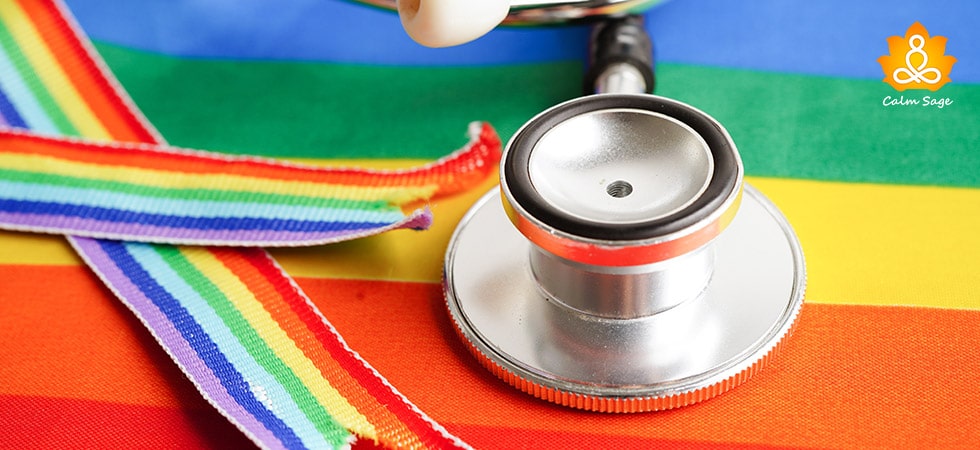Gender Dysphoria in Children and Teens (And How to Support Them)

Gender dysphoria is a condition in which a person experiences discomfort because they feel a mismatch between their gender identity and their assigned sex at birth. As the awareness and understanding of gender identity grows, the recognition of early signs in children and teens of gender dysphoria also increases.
Recognizing the signs of gender dysphoria in children and teens is important for parents, teachers, and even healthcare professionals as they, as a group, can offer support and resources to help the youth.
Many times, when parents or guardians realize that their child is gender-nonconforming or exploring different gender identities, the fear of their child facing rejection and being ostracized rises. With the myths and stereotypes that have been present in our society about gender identities and sexual orientations, the fear only grows.
As a parent, teacher, or guardian of a gender-diverse child or teen, it’s important to understand the signs and how you can be an ally to your kid. As a well-informed adult, it’s up to us to ensure our kids feel affirmed and confident in their identity — uncommon or not.
Gender Dysphoria in Children: Is It Common?
Children are innocent and do not have any solid preconceived notions about gender and sex. It’s the reaction of the adults in their lives that makes them react. So, it’s common for children and even teens who are exploring their identity to engage in gender-diverse behaviors. A boy might want to dress up as Elsa for Halloween or a party. A girl might wish to be a cowboy when she grows up.
This kind of behavior is normal and a natural part of growing up. After all, kids explore everything without prejudice. In any case, this behavior doesn’t define or mean that your kid is different or transgender.
But, if this behavior continues or your child feels a disharmony between their assigned sex at birth and their notion of gender identity, then it could be a sign of something more – gender dysphoria.
Now, your child playing dress up or playing with toys that are not associated with their sex, doesn’t mean they are transgender, but if your child repeatedly insists that they feel a disconnect from their assigned sex at birth and gender identity, then it could be a sign that your kid identifies as a transgender.
Signs of Gender Dysphoria in Children and Teens
Gender dysphoria doesn’t look the same in everybody, especially a child. However, there are always signs you can look for when a child or teen experiences gender dysphoria.
In Children, Gender Dysphoria Looks Like;
Children become aware of their gender identity early on and can express their identities to people around them. In pre-teens, the insistence that there is a disharmony between their assigned sex at birth and gender identity is there. Children, as they grow up, learn how to express their feelings and thoughts.
Any child experiencing gender dysphoria might;
- Feel distressed
- Experience poor academic performance
- Become upset when forced to change their behaviors
- Experience anxiety
- Experience symptoms of depression, and
- Engage in bodily harm or thoughts of suicide
Not all gender-diverse children experience gender dysphoria, but if they are experiencing the following signs, then it could be signs of gender dysphoria;
- A constant desire to become the opposite gender
- Feeling disgusted by their body and genitals
- A constant desire to reject typical gender norms
- Experiencing body rejection or trauma
In Teens, Gender Dysphoria Looks Like;
During the teenage years, it’s common for teens to experiment and explore their gender identity. However, not all teens who explore their identities or gender expression experience gender dysphoria.
But, if your teen is experiencing gender dysphoria, then they might show signs such as;
- Experiencing strong feelings that their gender and sex assigned at birth do not align
- Saying that they feel discomfort with their gender and sex
- Insist on changing their pronouns
- Feeling a strong desire to change their sex or genitals
- Avoiding going to school where they will face rejection
- Experiencing symptoms of depression
- Experiencing anxiety and social withdrawal
- Engaging in self-harm or suicidal behavior
Gender Dysphoria Treatment
As a child develops, they experience changes in their bodies. At the early development stage or pre-teen stage, a professional or gender-affirming therapist might help a child transition smoothly and safely. Social transition can mean using the preferred name and pronoun of the child.
Since gender dysphoria is not a mental illness, there is no treatment for it. The only way you can support a child experiencing gender dysphoria is by helping them feel affirmed in their gender identity and expression. Just helping and supporting them through the transition can help reduce the distress, anxiety, and emotional unrest they feel.
In teenagers, the treatment often includes giving them hormone medications, hormone therapy, and even gender-affirming surgeries. In the early teenage stage, gender-affirming therapists can prescribe puberty blockers or hormone replacement treatment to delay the bodily and hormonal changes that happen during puberty.
In the later teenage years, mostly after 18 years of age, feminine or masculine hormones might be given to a person to help them transition. In some countries, gender-affirming surgeries or hormone replacement surgeries are also available to help gender dysphoric youths.
How to Be an Ally to Your Children?
Parents and teachers often feel concerned about their children and teens “going through a phase”. However, if the signs of gender dysphoria are present in your children and teens, then it’s important to acknowledge that this “phase” might not just be a phase. Supporting them and becoming an ally to your kids is an important factor in ensuring that they live a healthy and happy life.
Experiencing gender dysphoria is in itself distressing, so having the parents’ and teachers’ support can mean a lot to a transitioning youth.
Here are some ways you can support your transitioning child and become an ally to them;
- Talk to them and understand their thoughts and feelings. Listen to them without judgment and rejection. If needed, help your child or teen find the right LGBTQIA+ resources
- Help your child find a gender-affirming therapist or professionals who can help your child come to terms with their feelings and arrange the right care for them
- Remain calm, patient, and open-minded as your child explores their gender identity. Communicate with them and try to understand their feelings of gender dysphoria
- Mind their pronouns. If your child chooses to change their pronouns, then respect their wishes and address them as they wish. If you make a mistake, then correct it
- Learn to support your child or teen’s identity, even if you’re uncomfortable with it. It’s about your child and how you support them
- Advocate for your child’s or teen’s rights. Talk to their teachers or counselors about their transition and how they can make it easier for them
- Join community groups or support groups to help yourself understand how to best support your child or teen. Continuing your education and awareness will help your child know that you are true in supporting them
Wrapping Up…
Recognizing the signs of gender dysphoria in children and teens can be the first step in offering the right support and care to them. As the adult in their lives, you hold power in how their health and wellness are impacted. If you react negatively, it will make your kid feel unsafe, so choose your reactions.
Knowing how gender dysphoria is affecting your child can help you support them by getting them the right guidance and help. Everyone has a right to their gender identity and expression, and how you choose to help your kid can help them move through life with confidence and understanding.
Let’s choose to make this world a better place for our children; a place where they are accepted and loved for who they are.
I hope this article helped you understand the signs of gender dysphoria in children and teens, and how to be their ally. Let us know how you support your gender-diverse kid in the comments below.
Take Care and Happy Pride!




















